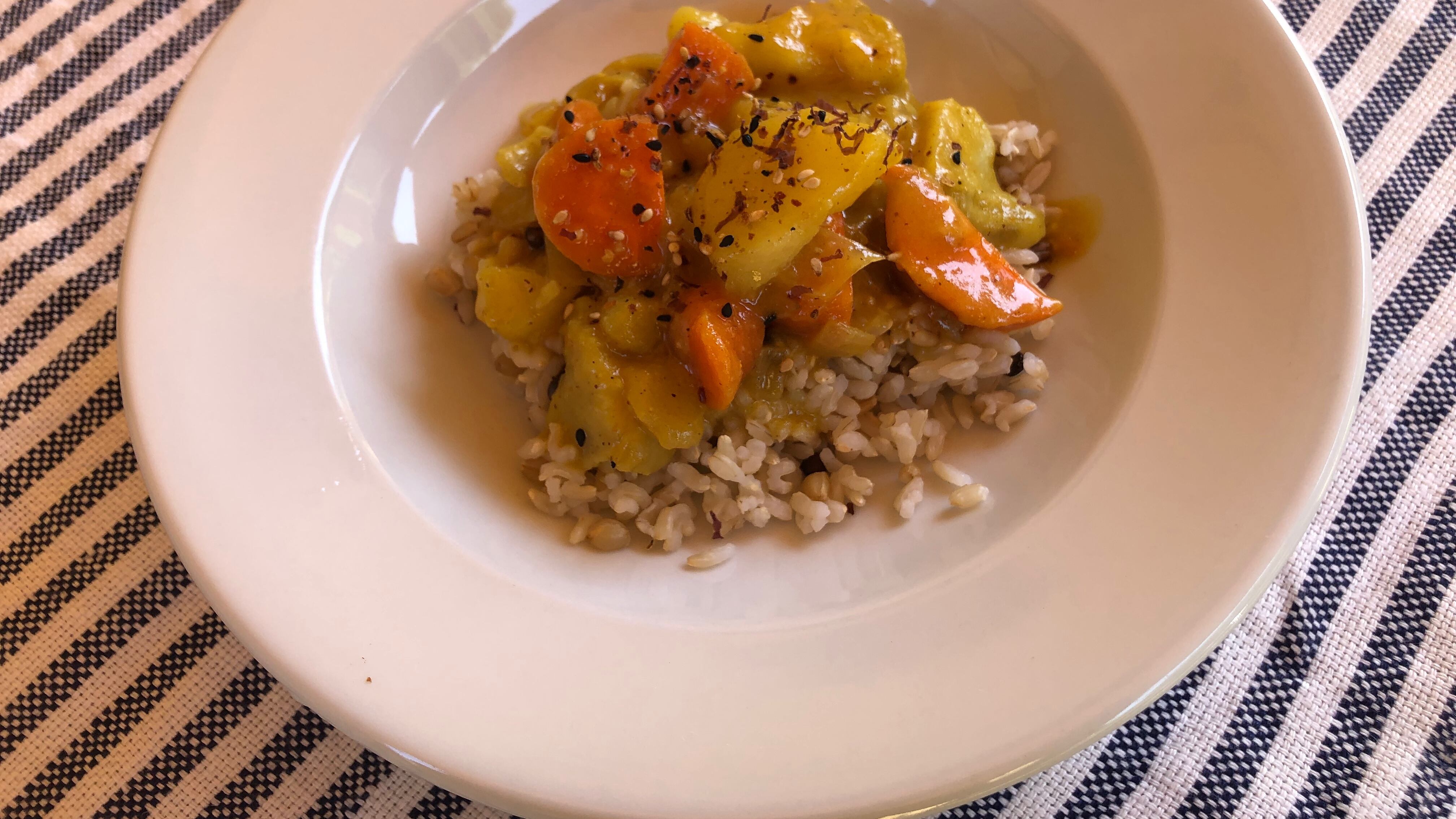Jim Dixon wrote about food for WW for more than 20 years, but these days most of his time is spent at his olive oil-focused specialty food business Wellspent Market. Jim’s always loved to eat, and he encourages his customers to cook by sending them recipes every week through his newsletter. We’re happy to have him back creating some special dishes just for WW readers.
Curry comes with some baggage.
The word itself probably comes from a Tamil term for seasoning spices, and British colonizers, who likely learned it from the Portuguese, applied it to anything with more flavor than what they ate back home. The spices that flavor curry—including ginger, garlic, fennel, mace, cumin, coriander, cardamom, cinnamon and turmeric—have been part of the blends called masalas that have been making the food of South Asia tasty for several thousand years. But when savvy Indian merchants realized there was a market, they started selling spice blends called curry to the flavor-hungry imperialists of the East India Company. As the Brits roamed the world exploiting other people, they took curry with them, and it’s become an essential flavor in everything from South African bunny chow to Jamaican patties to German currywurst to the country captain of South Carolina.
The Japanese embraced curry during the Meiji Restoration, the period from 1868 to 1912, when the emperor decided that some things from the outside world might be helpful. The navy in particular needed something to deal with the scourge of beriberi, an often fatal vitamin deficiency resulting from a diet heavy on polished, thiamine-free white rice. Nobody knew about the thiamine at the time, but the Japanese navy took a clue from the Brits, who fed sailors a stew of beef and root vegetables flavored with curry powder and thickened with flour. Both the meat and flour provided the thiamine, and before long Anglo Indian curry was the star of the navy mess hall. By the time the Japanese military was dissolved after World War II, curry rice, aka karē raisu, had become an important part of the culture.
My version deviates from more traditional Japanese curries by combining the curry with the flavors of the vegetable-braising technique called nimono, basically dashi broth flavored with soy, sake and mirin (if you don’t have the sake and mirin, you can leave them out). And to bump the umami up even more, I add some miso and ketchup, a surprisingly popular ingredient the Japanese add to pasta, fried rice and more. If you want to make it meaty, you could add cut up boneless chicken thighs, pork, or beef, and sometimes I’ll include other root vegetables like sweet potato or celery root.
Everyone has their own rice preferences, but I like to mix brown rice with naked or hulless barley. The combination, called mugi gohan (barley rice in English), dates back to an era when rice was expensive, and cheaper barley stretched the pot to feed more people. I use the rice-cooked-like-pasta technique, but since the barley takes a little longer to cook, I add it to the boiling water first, then the brown rice 10 minutes later. After another 350 minutes of active boiling, it gets drained, fluffed and rested before serving.
Japanese-Style Curry With Rice
1 onion, chopped
2 tablespoons extra-virgin olive oil
1/2 teaspoon kosher-style sea salt
2 tablespoons Mochiko sweet rice flour or all-purpose wheat flour
1 tablespoon curry powder, preferably S&B or a Japanese brand
A few shakes (roughly a pinch) monosodium glutamate (optional)
1 tablespoon ketchup
1 tablespoon miso
1 tablespoon soy sauce
1 tablespoon sake (optional)
1 tablespoon mirin (optional)
1-2 yellow potatoes, peeling optional, cut into bite-sized pieces
1-2 carrots, cut into bite-sized pieces
2 cups dashi or water
Cooked rice and togarashi for serving
Make the curry sauce by cooking the onion in the olive oil with salt until golden and very soft. Add Mochiko and stir to form a roux. Stir in the curry powder, MSG, ketchup, miso, soy sauce, sake and mirin. Remove from the heat and set aside.
In a separate pot, cook the potato and carrot in the dashi until tender, about 15 minutes. Add the curry sauce and mix well, adding more water or dashi if the mixture is too thick (it should be pourable and slightly viscous). Taste and add salt if needed. Serve over rice and sprinkle with togarashi if desired.

